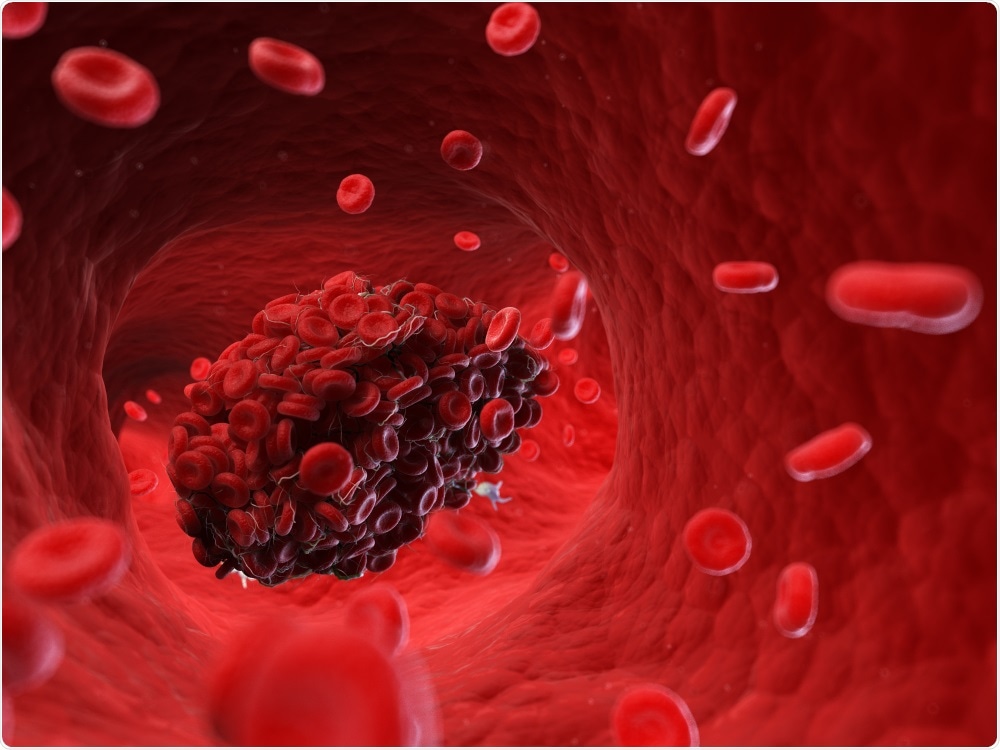A study published by the Radiology Society of North America reports an important discovery about abdominal aortic aneurysms (AAAs) that could help to identify high-risk patients who need to be monitored more closely.

Image Credit: Sebastian Kaulitzki/Shutterstock.com
Researchers at the University of California in San Francisco (UCSF) say that among patients with these AAAs, the presence of a blood clot on the aortic wall could speed up the growth of aneurysms and increase the risk of rupture.
The findings could help identify patients that may need more frequent monitoring and more aggressive treatment, once they have been diagnosed with an AAA.
About AAA
The aorta – a major artery that runs from the heart, through the chest and abdomen - is usually about 2cm wide. When an aneurysm forms in the part that passes through the abdomen, it can grow to 5.5cm, extending the width of the aorta to 1.5 times its initial size.
This condition affects about 200,000 people in the United States every year and if a AAA is not detected early, it can grow to such a size that the wall of the aorta eventually weakens and bursts, causing life-threatening bleeding.
The risk of developing AAA increases with age, but men are up to six times more likely to develop this aneurysm than women. Men aged over 65 years are at the highest risk and a ruptured AAA is the 10th leading cause of death among men older than 55 years.
How is AAA managed or treated?
Treatment approaches to AAA are based on the size of the swelling. Those that are less than 5.5cm in diameter are usually monitored by ultrasound, CT or MRI to check whether they are increasing in size, while aneurysms of 5.5cm or more are generally refereed for surgical repair.
However, first author Chengcheng Zhu from the UCSF’s Department of Radiology and Biomedical Imaging, thinks this size-based management approach is limited by the fact that it does not account for the presence or absence of intraluminal thrombi.
Why might these need to be factored in?
An intraluminal thrombus is a blood clot that forms on the wall of the aorta where the AAA is located. It is found in most cases of AAA that are approaching the 5.5cm-diameter surgical repair threshold, although it also forms in smaller aneurysms.
Despite the prevalence of intraluminal thrombi, researchers do not fully understand the effects they have on AAA growth or rupture risk. However, Zhu suspects they “could be a new marker for aneurysm growth.”
For the current study, Zhu and colleagues, therefore, focused on the presence or absence of intraluminal thrombi. Using high-resolution CT or MRI, the team assessed 225 men with AAA and followed them for a period that lasted an average of more than 3 years. Slightly more than half of the men with AAA also had an intraluminal thrombus.
As reported in the journal Radiology, among the men with a thrombus, the AAAs were larger at baseline, compared with those who did not have a thrombus. The AAASs among men with a thrombus also grew at a rate of 2mm per year, which was twice the 1mm-per-year rate recorded among those without a thrombus.
An aneurysm with thrombus grows much faster than one without a thrombus…Our study looked at a large number of patients with a relatively long follow-up to confirm that thrombus is a new risk factor that may be potentially reported by radiologists."
Zhu
What are the implications of the study?
The study did not explore potential reasons for why the presence of an intraluminal thrombus had such a significant impact on the aneurysms, but Zhu thinks the clot probably exerts damaging biochemical effects on the aortic wall.
"When the vessel wall is covered with thrombus, the lack of oxygen weakens the wall of the vessel, making the aneurysm likely to grow faster and rupture," he explains.
The findings suggest that the current follow-up protocols for monitoring patients with AAA may need to be changed to account for those who also have a thrombus. Currently, these protocols are only based on aneurysm size and do not consider the presence or absence of a thrombus.
"A patient at high risk may need closer monitoring," warns Zhu. "If in patients with a thrombus the aneurysm grows twice as fast, then shortening the surveillance interval could be considered."
Zhu acknowledges that more research is needed before the detection of thrombi can be included in patient protocols, but for now, he says the findings serve as useful information for physicians to consider when determining prognosis for patients with this potentially fatal condition.
Sources:
Eurekalert.org. (2020). Login | EurekAlert! Science News | EurekAlert! Science News. [online] Available at: https://www.eurekalert.org/emb_releases/2020-01/rson-pob012020.php [Accessed 28 Jan. 2020].
Bhf.org.uk. (2020). Abdominal aortic aneurysm. [online] Available at: https://www.bhf.org.uk/informationsupport/conditions/abdominal-aortic-aneurysm [Accessed 28 Jan. 2020].
nhs.uk. (2020). Abdominal aortic aneurysm. [online] Available at: https://www.nhs.uk/conditions/abdominal-aortic-aneurysm/ [Accessed 28 Jan. 2020].